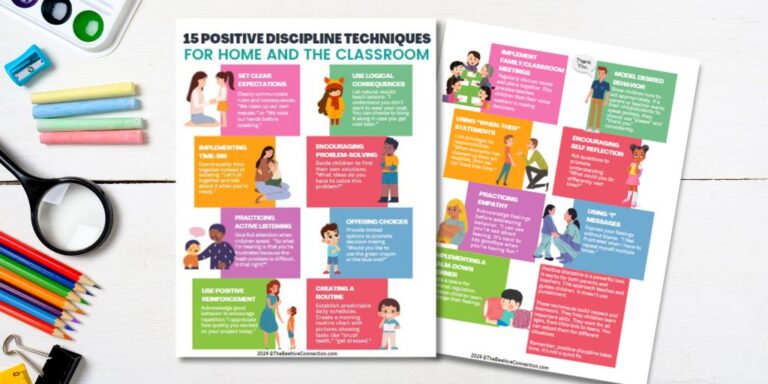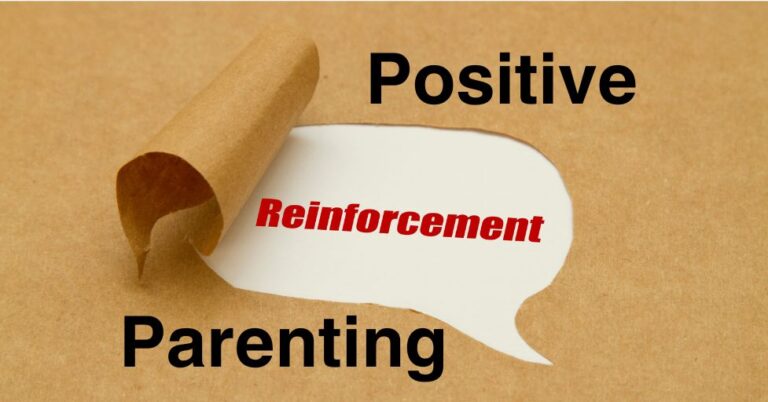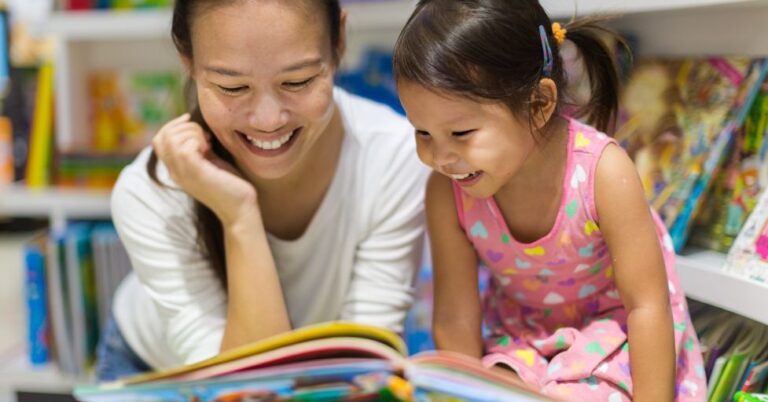Positive Discipline vs Punishment Worksheet: FREE Guide for 2025
Disclosure: This post may contain affiliate links, meaning I may get a small commission if you decide to make a purchase through my links, at no cost to you.
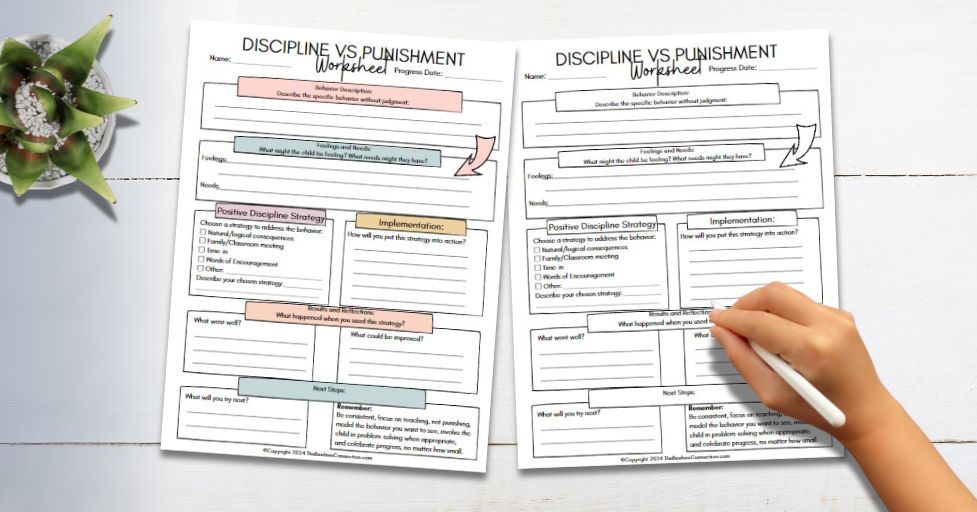
positive discipline vs punishment worksheet: FREE Guide
Parenting in 2024 is no walk in the park! But here’s a shocking stat: 81% of parents admit to yelling at their kids at least once a month. That’s where our positive discipline vs punishment worksheet comes in handy. We’ll dive into the game-changing differences between these two approaches and give you practical tools to transform your parenting. Ready to swap those time-outs for time-ins? Let’s get started!
Understanding Positive Discipline vs Punishment
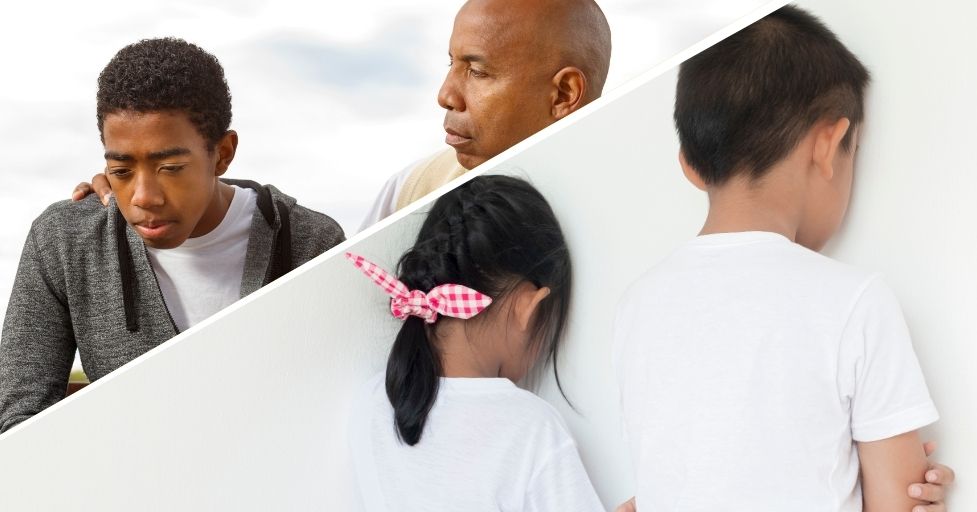
Oh boy, let me tell you about positive discipline and punishment. As a mom of four kids and a former preschool teacher, I’ve been on both sides of this fence, and lemme tell ya, it’s been quite the roller coaster!
Definition of positive discipline
So, what exactly is positive discipline? Well, it’s kinda like being a coach for your kids instead of a drill sergeant. It’s all about teaching them the right way to behave, rather than just focusing on what they’re doing wrong. Think of it as guiding young children towards good choices instead of just yelling “No!” all the time.
To understand more about Positive Discipline Check out these articles:
Positive Discipline in Everyday Teaching
Positive Discipline Techniques PDF – For Home and the Classroom
Age Related Positive Discipline Chart
Positive Discipline Mistakes and How to Avoid Them
Definition of punishment
Now, punishment? That’s a whole different ball game. It’s basically when we try to make kids feel bad for messing up, hoping they won’t do it again. Like when I used to send my oldest to the naughty step every time he talked back. Spoiler alert: it didn’t work out so great in the long run.
Key Differences Between Positive Discipline and Punishment

The key differences between these two approaches? Phew, where do I even start? Positive discipline is all about teaching and understanding, while punishment is more about control and fear. With positive discipline, we used effective discipline techniques to help kids learn from their mistakes. Punishment, on the other hand, is often just about making them suffer for what they did wrong.
I remember this one time in my preschool class when one child kept grabbing toys from other kids. My first instinct was to put him in time-out (hello, punishment!). But then I tried a positive discipline approach instead. We talked about how it made the other kids feel, practiced asking nicely, and even role-played sharing scenarios. It took more time and patience, but boy, did it pay off!
Short-Term and Long-Term Affects on Children
Now, let’s chat about short-term vs long-term effects. Punishment might seem to work in the moment – like when I used to threaten to take away screen time and suddenly the kids would behave. But in the long run? Not so much. These negative consequences only made my kids get sneakier about breaking rules.
Positive discipline, though? It’s like planting seeds that grow into awesome behavior trees (is that a thing? Well, it is now!). It might take longer to see results, but when kids understand WHY they should behave a certain way, it sticks with them and they develop important life skills.
In my current job working with special needs young adults, I see the long-term effects clear as day. The ones who grew up with more positive discipline tend to have better problem-solving skills, social skills, and emotional regulation. Meanwhile, those who faced a lot of punishment often struggle with self-esteem and anger management.
Take the time to teach positive discipline vs punishment

One thing I’ve learned is that positive discipline isn’t always easy. There’ve been plenty of times when I’ve wanted to just send a kid to their room and be done with it. But I’ve seen how taking the time to teach and guide pays off big time in the long run.
Here’s a pro tip: when you’re tempted to punish, take a deep breath and ask yourself, “What do I want my child to learn from this?” That simple question has saved my bacon more times than I can count!
So, while punishment might seem like a quick fix, positive discipline is the real MVP when it comes to raising happy, well-adjusted kiddos. It’s all about playing the long game, folks. Your future self (and your kids) will thank you!
Benefits of Positive Discipline vs Punishment

Let me tell you, the benefits of positive discipline are no joke! As a mom of four and someone who’s spent years in both preschool and special education, I’ve seen firsthand how this approach can work wonders.
Strengthens parent-child relationship
First off, let’s talk about that parent-child relationship. When I switched from traditional punishment to positive discipline, it was like night and day. My kids actually started coming to me with their problems instead of hiding them!
There was this one time when my youngest son accidentally broke a neighbor’s car window with a baseball. Instead of freaking out, we worked together to figure out how to make it right. We brainstormed ideas, and he ended up doing extra chores to earn money for the repair. The pride on his face when he apologized and offered to pay for the damage – when kids develop a sense of responsibility – priceless!
Promotes self-discipline and emotional regulation

Now, self-discipline and emotional regulation? In child development, that is where the magic really happens. I remember this little girl in my preschool class who used to have massive meltdowns whenever she didn’t get her way. Instead of time-outs, we started using “calm-down corners” where she could go to cool off and identify her feelings. Within a few weeks, she was using her words to express frustration instead of throwing things. It was like watching a little emotional intelligence superhero in action!
Enhances problem-solving skills
Problem-solving skills are another huge benefit. Although there are different approaches to teaching problem-solving skills, when we use positive discipline, we’re basically giving kids a toolbox for life. In my current job working with special needs young adults, I see how crucial these skills are.
We had a student who struggled with time management, always rushing and forgetting things. Instead of just scolding him, we worked together to create a visual schedule and set reminders on his phone. Now he’s rarely late and feels so much more in control of his day.
Boosts self-esteem and confidence in children
And let’s not forget about self-esteem and confidence. Oh boy, does positive discipline boost these! There was this kid in my son’s class who was always getting in trouble for talking too much. His parents started using positive discipline techniques, focusing on his strengths (like being a great communicator) and channeling that energy into positive activities. Now he is a master at debate!

Catch them being good
One tip I always share: catch ’em being good! It’s so easy to focus on the negative, but when we make a point of noticing and praising good behavior, it’s like magic. The child’s behavior improves and kids start to see themselves as capable, responsible little humans.
“when-then”
Another thing that’s worked wonders for me is using “when-then” statements instead of threats. Like, “When you’ve finished your homework, then you can play video games.” It puts the ball in their court and teaches cause and effect without all the drama.
I gotta say, seeing a kid’s face light up when they solve a problem on their own or make a good choice without being told – that’s what makes all the effort worth it. Positive discipline might take more patience and creativity, but the payoff in confident, emotionally intelligent kids.
Common Punishment Methods and Their Drawbacks

Let’s talk about punishment methods and why they might not be the best way to go. As the 3rd child of eleven and a mom of four kiddos, I’ve seen it all when it comes to the word discipline. And let me tell you, I’ve made my fair share of mistakes along the way!
Did you know that 80% of parents admit to yelling at their kids at least once a month? Yep, I was definitely in that statistic for a while. But here’s the thing – these common punishment methods often do more harm than good in the long run.
Related Article:
Positive Discipline Mistakes and How to Avoid Them
Time-outs and isolation
I used to think time-outs were the answer to everything. Little Timmy threw a tantrum? Time-out! Sarah refused to share? Time-out! But here’s what I learned – time-outs can really mess with a kid’s sense of security.
I remember when my youngest was about 3. She was having a meltdown in the grocery store, and I thought, “Aha! I’ll just plop her in the cart and ignore her.” Big mistake. She just got more and more upset, and I felt like the worst mom ever.
The problem with time-outs is that they don’t actually teach kids how to handle their emotions. Instead, they just feel abandoned when they need us most. Plus, for some kids, any attention (even negative) is better than no attention, so time-outs can accidentally reinforce bad behavior.
Spanking and physical punishment
Okay, this is a touchy subject, I know. Studies have shown that kids who are spanked are more likely to have mental health issues, relationship problems, and even lower IQs later in life. Plus, it teaches kids that it’s okay to use violence to solve problems, which is definitely not the message we want to send.
I’ll admit, there were times when I was tempted to give a quick swat on the bottom. But then I realized – if I wouldn’t hit an adult for making a mistake, why would I hit a child who’s still learning?
Yelling and verbal aggression

Raise your hand if you’ve ever lost your cool and yelled at your kids. Raises both hands Yep, been there, done that, got the t-shirt. But here’s the thing – yelling might get their attention in the moment, but it does some serious damage if we are constantly doing it to change a child’s behaviour.
I remember one day when I was having a particularly rough time with my oldest daughter. I just lost it and started yelling about how she never listens. The look on her face… I’ll never forget it. That’s when I realized I needed to find a better way.
Yelling teaches kids to communicate through aggression. It also damages their self-esteem and can lead to anxiety and depression. Plus, it’s just plain scary for little ones who depend on us for safety and security.
Removal of privileges
Taking away screen time, canceling playdates, no dessert – we’ve all been there, right? And sure, it might seem like a logical consequence. But here’s the problem – in the long term it often doesn’t actually teach the lesson we’re trying to get across.
For example, I used to take away my daughter’s phone when she didn’t do her chores. But did it make her more responsible? Nope. It just made her sneakier about using her friends’ phones and resentful towards me.
The issue with removing privileges is that it doesn’t actually address the root of the problem. Plus, it can create a power struggle that just leads to more conflict.
Positive Discipline Techniques to Try
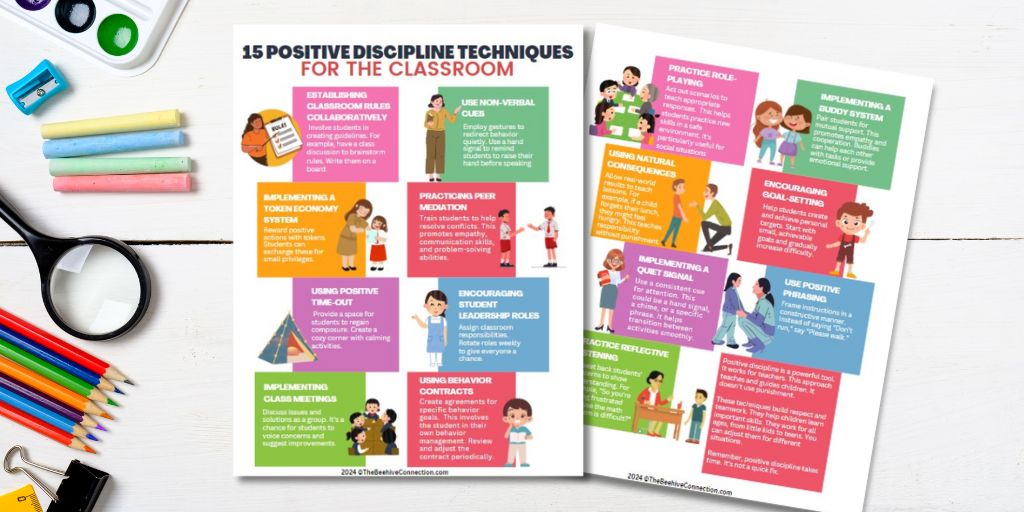
So, what’s the alternative to all these punishment methods? That’s where positive discipline comes in. Instead of punishment, we should teach and guide children. It’s about helping kids understand why certain behaviors are important and giving them the tools to make better choices and eliminate undesirable behaviour.
For instance, instead of a time-out, try a “time-in” where you sit with your child and help them calm down. Instead of yelling, take a deep breath and speak calmly (even if you have to fake it ’til you make it!). And instead of taking away privileges, try working together to come up with a solution.
Is it easy? Heck no! But is it worth it? Absolutely. When we move away from punishment and towards positive discipline, we build stronger relationships with our kids and help them become more responsible, empathetic adults.
Alright, let’s dive into some positive discipline techniques that actually work! As a mom of four and a former preschool teacher, I’ve tried just about everything under the sun when it comes to discipline. But these methods? They’re the real deal.
Did you know that according to a study by the American Psychological Association, kids who experience positive discipline techniques are more likely to develop self-discipline and empathy? That’s pretty awesome, if you ask me!
Check out our Positive Discipline Technique FREE PDF
Natural and logical consequences

Natural and logical consequences have been a game-changer in our house. It’s like letting the world do the teaching for you in changing unwanted behavior!
Once, my second oldest refused to wear a coat to school. Instead of arguing, I just let her go without it. Guess what? She was freezing at recess and asked for her coat the next day. Lesson learned, no nagging required!
The key is to make sure the consequence is directly related to the behavior. If your kid forgets their lunch, don’t take away TV time – let them experience the natural consequence of being hungry (while maybe keeping a backup sandwich in your car, because we’re not monsters!).
Related Articles:
Natural Consequences – Your Complete Guide
Family meetings and collaborative problem-solving
Family meetings might sound like something out of a cheesy sitcom, but they work wonders. We started having weekly family meetings when the kids were little, and it’s become a tradition we all look forward to.
During these meetings, we tackle everything from chore assignments to planning family activities. But the real magic happens when we use them for problem-solving.Nat
For instance, we were having issues with Sunday mornings. Those mornings were chaotic when trying to get ready for church. Sundays are supposed to be a day of rest. Instead of just laying down the law, we brainstormed solutions as a family.
The kids came up with the idea of a Sunday playlist – and it’s been a lifesaver getting the kids ready for church on time and having a peaceful day.
Related Article:
Benefits of Family Meeting and FREE Printables
Positive time-out or “time-in”
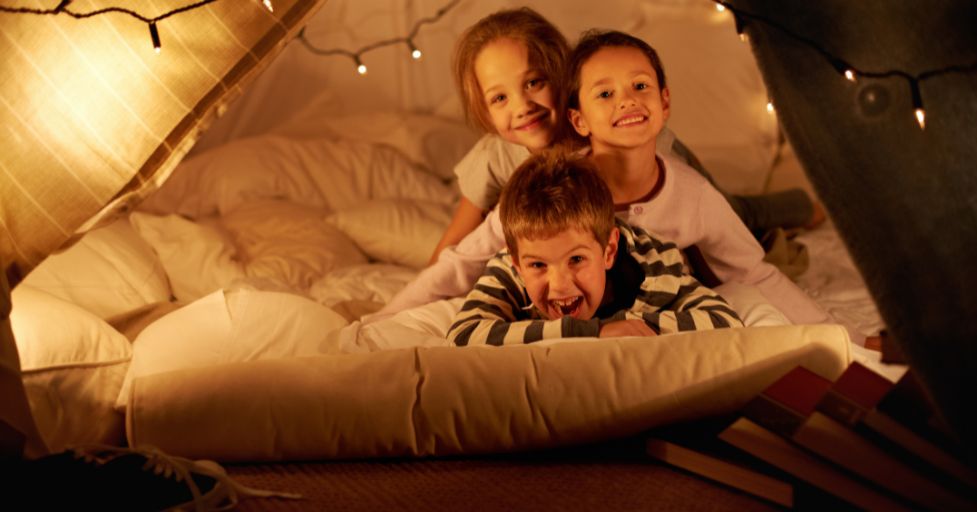
Forget those old-school time outs where kids sit in the corner feeling miserable. “Time-ins” are where it’s at! This effective parenting technique has been a blessing, especially for my youngest, who used to have epic meltdowns and power struggles.
Here’s how it works: when a kid is losing it, instead of sending them away, you bring them closer. We have a cozy corner with pillows and some calming toys. When emotions are running high, we take a “time-in” together to cool down and talk things through.
I remember one day when my eldest was furious about a fight with his sister. Instead of punishing him, we took a time-in. By the end, he’d calmed down enough to come up with his own solution to the problem.
Related Article:
The Ultimate Guide to Time Ins
Praise and encouragement strategies

Y’all, I used to think I was being a great mom by constantly telling my kids “Good job!” for every little thing. Turns out, there’s a much better way to praise and encourage for positive outcomes.
The trick is to be specific and focus on effort rather than results. Instead of a generic “good job,” try something like, “Wow, you worked really hard on that math problem! I saw how you didn’t give up even when it got tough.”
In my special needs classroom, we use a technique called “descriptive praise.” It’s all about noticing and describing positive behaviors. For example, “I see you’re sitting quietly with your hands in your lap. That shows great self-control!”
What is a Praise Sandwich?
One strategy that’s worked wonders is the “praise sandwich.” When you need to correct a behavior, sandwich it between two positive observations. Like, “I love how you’re trying to help. Next time, please ask before touching someone else’s things. You’re such a thoughtful friend!”
Remember, the goal of positive discipline isn’t to make our kids feel bad or to control them. It’s about teaching them how to manage their emotions, make good choices, and become responsible adults.
It ain’t always easy, and there are definitely days when I want to throw in the towel and go back to ye olde “because I said so.” But stick with it, parents! The payoff is totally worth it. Your kids will thank you… eventually!
Related:
Praise Vs Words of Encouragement
25 Words of Encouragement FREE Printable
Positive Techniques PDF for Home and the Classroom
How to Use the Positive Discipline Vs Punishment Worksheet

Alright, folks, let’s chat about how to use that positive discipline worksheet! This little piece of paper can be a total game-changer in the real world. As a mom of four kiddos and someone who’s worked with all sorts of children, I’ve learned that having a plan can make all the difference.
Did you know that according to a study by the American Academy of Pediatrics, consistent use of positive discipline techniques can reduce behavioral problems by up to 50%? That’s huge! But consistency is key, and that’s where our handy worksheet comes in.
Download the Positive Discipline vs Punishment Worksheet Here
Overview of Positive Discipline Vs Punishment Worksheet Sections
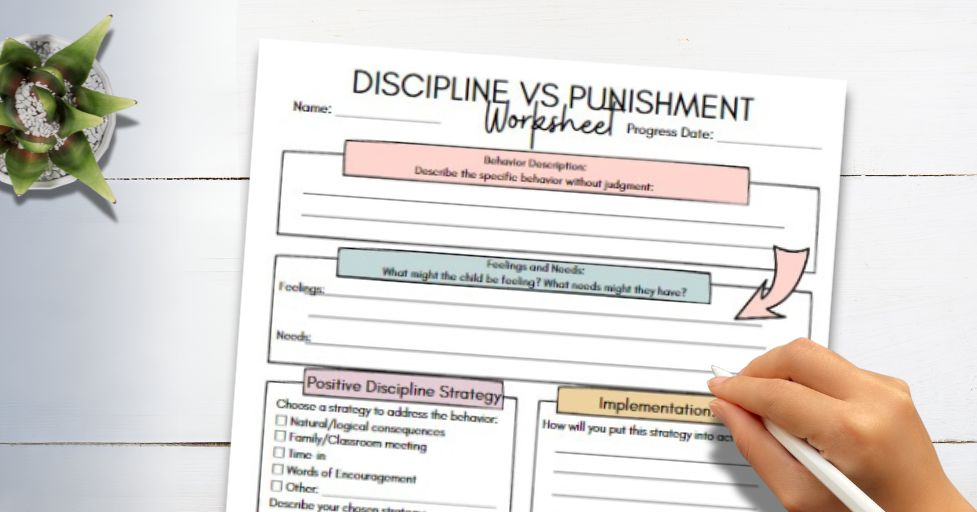
So, what’s on this magical worksheet? Well, it’s got a few key sections that’ll help you get your positive discipline groove on.
First up, we’ve got the “Behavior Description” section. This is where you’ll jot down what’s actually happening. No judgement, just facts. Like, “Timmy throws his toys when he’s asked to clean up.”
Next, there’s the “Feelings and Needs” section. This is where you’ll play detective and try to figure out what’s driving the behavior. Maybe Timmy’s feeling overwhelmed by the mess, or he needs more transition time.
Then we’ve got the “Positive Discipline Strategy” section. This is where you’ll plan your approach. Remember, we’re aiming for teaching, not punishing!
Finally, there’s a “Results and Reflections” section. This is where the real learning happens, for both you and your kiddo!
Other Charts and Worksheets You May be Interested in
15 Positive Discipline Techniques PDF- For Home and the Classroom
Age-Related Discipline Chart PDF
A step-by-step guide to filling out the Positive Discipline Vs Punishment worksheet

Okay, so how do we actually find effective ways to use the thing? Let’s break it down.
Step 1: Pick a behavior you want to work on. Don’t try to tackle everything at once – that’s a recipe for frustration!
Step 2: In the “Behavior Description” section, write down exactly what’s happening. Be specific! Instead of “Billy is being a bad kid,” try “Billy hits his sister when she takes his toys.”
Step 3: For the “Feelings and Needs” part, put on your empathy hat. What might be going on for your child? In positive discipline, we call it a mistaken belief. Maybe Billy is feeling frustrated and needs attention.
Step 4: Now for the fun part – choosing your positive discipline strategy to help Bill achieve an appropriate behavior! This could be something like teaching Billy to use his words, or setting up a “cool down” corner for when emotions run high.
Step 5: Implement your strategy and watch what happens. Then, fill out the “Results and Reflections” section. Be honest – what worked? What didn’t? What could you try next time?
Tips for implementing positive discipline strategies
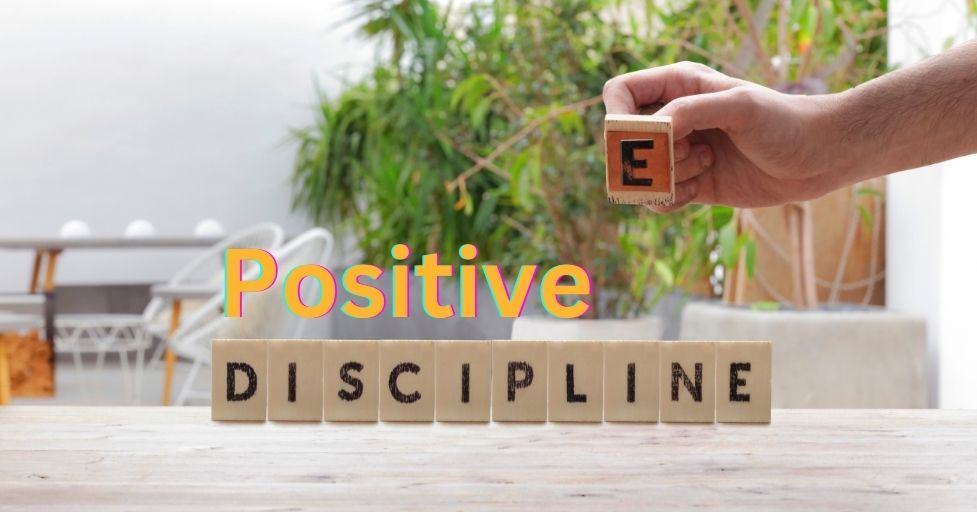
Consistency is key. You gotta stick with your chosen strategy for at least a couple weeks before you decide if it’s working or not.
Another biggie? Model the behavior you want to see. If you’re trying to teach your kids to use calm words when they’re angry, you should be doing the same thing!
Oh, and here’s a tip that saved my sanity – involve your kids in the process. Ask them what they think might help. You’d be surprised at how insightful they can be!
Tracking progress and adjusting techniques
Now, don’t expect miracles overnight. Change takes time, especially when it comes to behavior. But that’s why tracking your progress is so important!
I like to set a reminder on my phone to review the worksheet every week. Look for patterns – is the behavior happening less often? Are there certain times or situations where it’s more likely to occur?
Don’t be afraid to adjust your approach if something’s not working. Maybe your first strategy didn’t quite hit the mark – that’s okay! The beauty of this worksheet is that it helps you learn and adapt.
Talking Stick Positive Discipline Technique
I remember when I was trying to help my youngest stop interrupting during family discussions. Our first strategy of using a “talking stick” was a total flop – she just used it as a sword! But by tracking our progress (or lack thereof), we were able to try a new approach of using non-verbal signals, which worked much better.
Remember, the goal here isn’t perfection. It’s progress. Some days will be better than others, and that’s totally normal. What matters is that you’re making an effort to use positive discipline consistently.
So, grab that worksheet and give it a whirl! It might feel a bit awkward at first, but stick with it. Before you know it, you’ll be a positive discipline pro, and your kids will be thanking you (well, maybe not out loud, but trust me, they’ll appreciate it down the road!).
Real Life Scenarios Positive Disciplines Vs Punishment Worksheet

Oh boy, let’s talk about real-life scenarios where positive discipline vs punishment can save the day! As a mom of four and the oldest girl of eleven kids, I’ve seen it all. And let me tell you, these situations can test even the most patient parent.
Did you know that according to a survey by the American Psychological Association, 69% of parents say that managing their children’s behavior is one of their biggest challenges? You’re not alone, folks!
Dealing with tantrums in public
Ah, the dreaded public tantrum. I remember one time at the grocery store, my youngest decided to have a full-on meltdown on the way out of the store. Talk about wanting the floor to swallow you whole!
Here’s what I’ve learned works: First, take a deep breath. Remember, this too shall pass. Then, get down to your child’s level and acknowledge their feelings. “I see you’re really upset right now. Can you show me with your fingers how big your feelings are?”
Sometimes, a change of scenery can work wonders. I’ve been known to abandon a shopping cart and head to the car for a quick reset. It’s not ideal, but it’s better than battling it out next to the Cheerios!
One trick that’s saved my bacon more than once is the “choice” technique. Give them two acceptable options. Like, “Do you want to sit in the cart or walk beside me holding my hand?” It gives them a sense of control without derailing your whole outing.
Related Article:
Tips for Taming Tantrums for Toddlers to Teens
Handling sibling rivalry
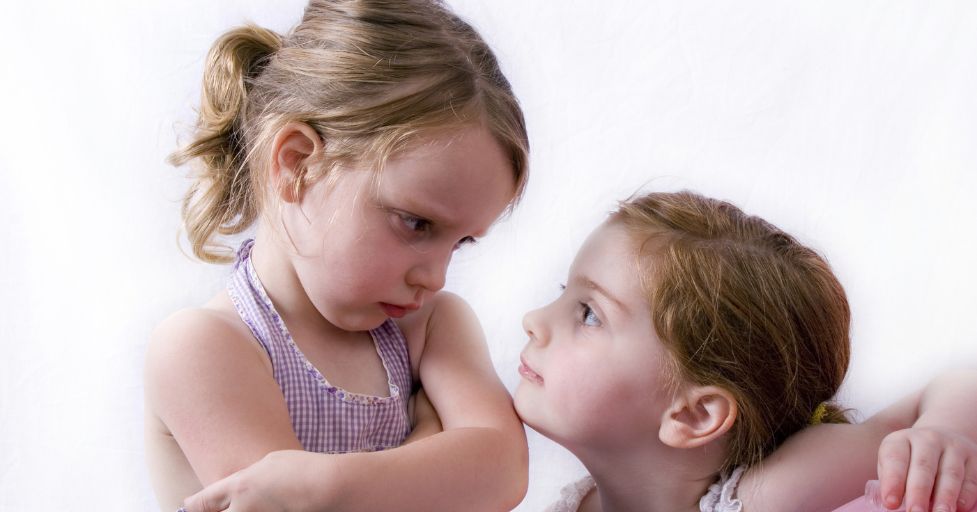
Sibling rivalry – the bane of every multi-child household! I swear, sometimes I feel more like a referee than a mom.
One strategy that’s worked wonders for us is the “problem-solving meeting.” When my two middle kiddos were constantly at each other’s throats, we sat down as a family and brainstormed solutions. They came up with a “peace treaty” that included things like knock before entering each other’s rooms and a system for sharing the TV remote. Was it perfect? Nope. But it definitely helped!
Another trick is to focus on cooperation rather than competition. Instead of “Who can clean up their toys the fastest?”, try “Let’s see if we can get all these toys cleaned up before this song ends!” It’s amazing how a little teamwork can defuse tension.
Oh, and here’s a biggie – don’t play the comparison game. Each kid is unique, and pointing out one child’s strengths can make the other feel inadequate. Instead, celebrate each child’s individual progress and efforts.
Related Article:
Tips for Sibling Rivalry Solutions
Addressing homework struggles
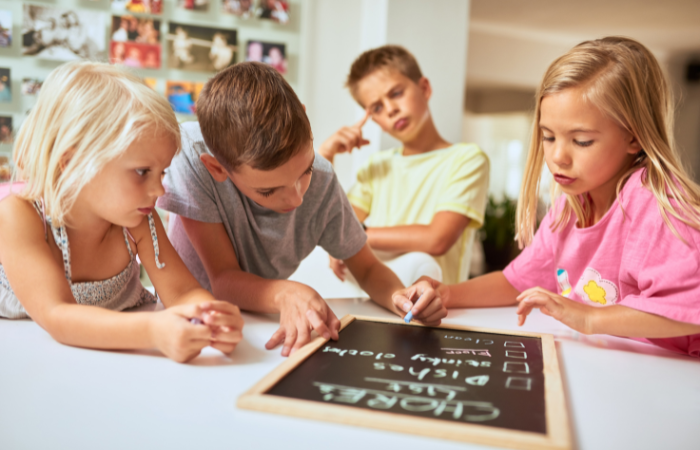
Homework battles – ugh, they’re the worst! One technique that’s been a game-changer is the “work-break-work” method. Set a timer for 20 minutes of focused work, followed by a 5-minute break. Rinse and repeat. It’s amazing how much more manageable homework becomes when it’s broken into chunks.
Creating a dedicated homework space can also make a world of difference. It doesn’t have to be fancy – even a corner of the kitchen table can work. The key is consistency and having all the necessary supplies at hand.
And here’s a tip that might seem counterintuitive – sometimes, the best thing you can do is step back. I had to learn this the hard way with my oldest. The more I hovered, the more resistant he became. When I gave him some autonomy (with clear expectations), his attitude towards homework improved dramatically.
Managing screen time conflicts
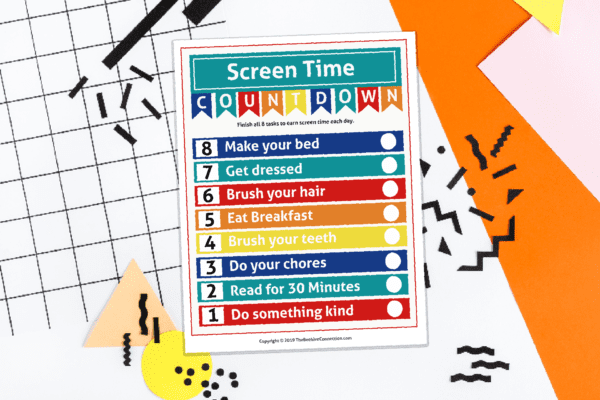
Screen time – the modern parent’s nemesis! According to the American Academy of Child and Adolescent Psychiatry, children ages 8-12 spend an average of 4-6 hours a day watching or using screens. That’s a lot of potential conflict!
One strategy that’s worked well in a friend’s house is the “tech ticket” system. Each kid gets a certain number of “tickets” per day, which they can exchange for screen time. Once the tickets are gone, that’s it for the day. It puts the control in their hands and cuts down on the constant negotiating.
Here is a screen time punch cards and bingo it will be a game changer.
Boredom Busters and Screen Time FREE Printables
Setting clear boundaries is crucial. In our house, devices are a no-go during meals and family time. And you know what? It was tough at first, but now it’s just part of our routine.
Here’s a positive discipline approach that’s been a hit – instead of focusing on limiting screen time, we emphasize filling time with other activities. We have a “boredom buster” jar filled with fun, screen-free activity ideas. When the kids claim they’re bored, they pick from the jar. It’s amazing how quickly they forget about screens when they’re engaged in something else!
Related Articles:
Check out our FREE Boredom Buster Printables
Remember, positive discipline isn’t about being perfect. It’s about teaching, guiding, and building strong relationships with our kiddos. Some days will be smoother than others, and that’s okay. The important thing is to keep trying, keep learning, and keep loving those little rascals of ours!
Creating a Positive Discipline Action Plan

Alright, let’s dive into creating a positive discipline action plan! This is where the rubber meets the road, folks. As a mom of four kiddos and someone who’s worked with all sorts of children, I can tell you that having a solid plan makes all the difference.
Did you know that according to a study by the American Academy of Pediatrics, children who experience consistent discipline methods are 50% less likely to develop behavior problems? That’s huge! But consistency is key, and that’s where our action plan comes in handy.
Setting family rules and expectations
First things first, we gotta lay down some ground rules. Now, I used to think that meant me coming up with a list of “thou shalt nots” and expecting everyone to follow them. Boy, was I wrong!
I remember sitting down with my brood to create our family rules. My oldest, always the jokester, suggested “eat ice cream for breakfast” as a rule. We all had a good laugh, but you know what? It opened up a great discussion about health and nutrition.
The key is to involve everyone in the process. Ask your kids what they think is important for the family. You might be surprised at their insights! In our house, “respect each other’s personal space” was actually suggested by my youngest. Who knew?
Keep the rules simple and positive. Instead of “No yelling,” try “Use indoor voices.” And remember, less is more. Aim for 5-7 main rules that everyone can easily remember.
Related Article:
Age Related Discipline Chart PDF
Establishing consistent routines
Oh boy, routines. They’re like the holy grail of positive discipline. I used to think routines were boring, but let me tell you, they’re a total game-changer!
In my preschool teaching days, I saw firsthand how routines can transform a chaotic classroom into a smooth-running machine. The same applies at home. Kids thrive on predictability – it gives them a sense of security and control.
Start with the trouble spots in your day. For us, mornings were a nightmare until we established a solid routine. We made a visual chart with pictures showing each step – get dressed, eat breakfast, brush teeth, etc. It was like magic! Suddenly, I wasn’t nagging anymore, just referring to the chart.
Remember, it takes time for routines to stick. Be patient and consistent. It might take a few weeks, but I promise it’s worth it!
Developing a reward system
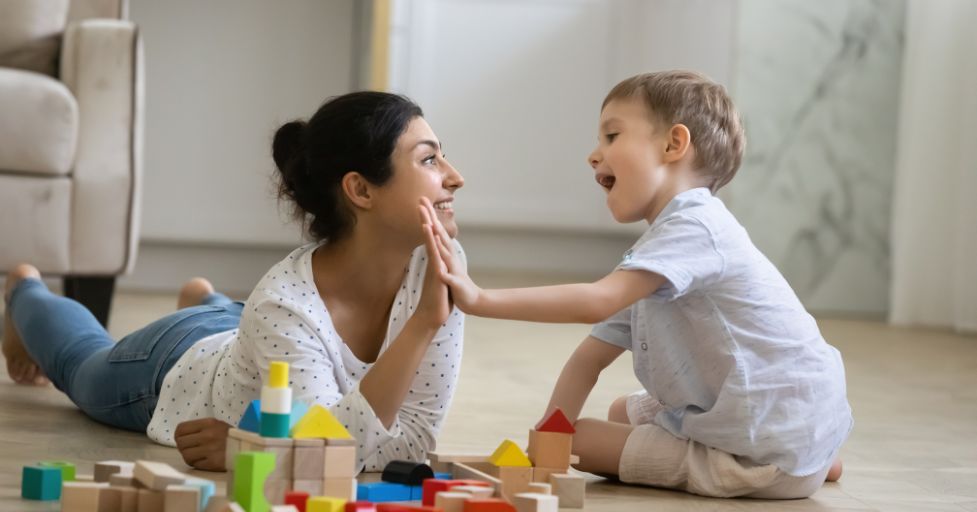
Now, let’s talk rewards. I used to be all about the sticker charts and prizes, but I’ve learned there’s a better way. Intrinsic motivation is where it’s at!
In my current job working with special needs young adults, we focus on helping them recognize their own accomplishments. It’s not about earning a toy or treat, but about feeling proud of themselves.
One system that’s worked wonders is the “caught being good” jar. Whenever someone in the family notices another person doing something kind or helpful, they put a pom-pom in the jar. When the jar is full, we celebrate as a family with a special activity. It encourages everyone to look for the positive in each other.
Another idea is the “privilege menu.” List out special privileges (like choosing the family movie or having a later bedtime) and let kids earn them through consistent good behavior. It teaches them that privileges come with responsibility.
Related Article:
Positive Reinforcement Parenting: Transform Your Family
Planning for challenging situations
Alright, here’s where the rubber really meets the road. We all have those situations that make us want to tear our hair out. The key is to plan ahead!
I remember this one time at the grocery store, my youngest had a full-on meltdown in the cereal aisle. After that disaster, I sat down and made a plan for future shopping trips. We role-played at home, practiced deep breathing techniques, and I always made sure to bring a small snack and a quiet toy.
Identify your family’s trigger situations. Is it bedtime? Car rides? Visits to grandma’s house? Once you know your pain points, you can brainstorm solutions before you’re in the heat of the moment.
One technique that’s been a lifesaver is the “when-then” statement. For example, “When you’ve put on your pajamas, then we can read a bedtime story.” It gives kids a clear expectation and motivation.
And here’s a pro tip: always have a backup plan. Things won’t always go smoothly, and that’s okay. Maybe your backup plan is simply to leave the situation if things get too heated. That’s perfectly fine!
Remember, creating a positive discipline action plan is a process. It might take some trial and error to figure out what works best for your family. Be patient with yourself and your kiddos. Celebrate the small victories along the way.
And on those days when everything seems to fall apart (because let’s face it, we all have those days), take a deep breath and remind yourself that tomorrow is a new day. You’ve got this, super parent!
Related:
Positive Discipline Download – Positive Discipline Techniques PDF
Conclusion Positive Discipline Vs Punishment Worksheet

Whew! We’ve covered a lot of ground, haven’t we? By now, you’re armed with a toolkit of positive discipline strategies that’ll make punishment feel like a relic of the past. Remember, Rome wasn’t built in a day, and neither is perfect parenting. Be patient with yourself as you implement these new techniques.
Your positive discipline worksheet is your trusty sidekick in this journey, helping you navigate the ups and downs of raising amazing kids. So, are you ready to transform your household into a haven of mutual respect and understanding? Download our worksheet today and take the first step towards a happier, healthier family dynamic. You’ve got this, super parent!
FAQs related to Positive Discipline vs Punishment Worksheet:
- Q: What’s the difference between positive discipline and punishment? (Keywords: positive discipline vs punishment, discipline methods)
A: Positive discipline teaches kids good behavior through guidance and support, while punishment focuses on making kids feel bad for misbehaving. Positive discipline aims to build skills and understanding, not just stop bad behavior. - Q: How do I start using a positive discipline worksheet? (Keywords: positive discipline techniques, parenting worksheets)
A: Begin by observing your child’s behavior and writing it down without judgment. Then, think about what your child might be feeling or needing. Brainstorm positive ways to address the behavior and teach skills. Try your strategy and reflect on the results. - Q: Can positive discipline work for teenagers? (Keywords: positive discipline for teens, teen behavior management)
A: Absolutely! Positive discipline can be great for teens. It involves respecting their growing independence while still providing guidance. Use family meetings, logical consequences, and collaborative problem-solving to address issues with your teen. - Q: How long does it take to see results with positive discipline? (Keywords: effectiveness of positive discipline, behavior change timeline)
A: It varies, but most parents see some improvement within a few weeks of consistent use. Remember, it’s about long-term learning, not quick fixes. Stick with it, and you’ll likely see significant changes in a few months. - Q: What if positive discipline doesn’t seem to be working? (Keywords: troubleshooting positive discipline, discipline challenges)
A: First, make sure you’re being consistent. If issues persist, try adjusting your approach. Consider your child’s age and temperament. Sometimes, seeking help from a family therapist or parenting coach can provide new insights and strategies.
GET FREE ACCESS TO OUR LIBRARY OF FREE PRINTABLES AND RESOURCES!
Enter Your Name and Email for FREE Access to our Library of FREE Home and Family Printables Series!

